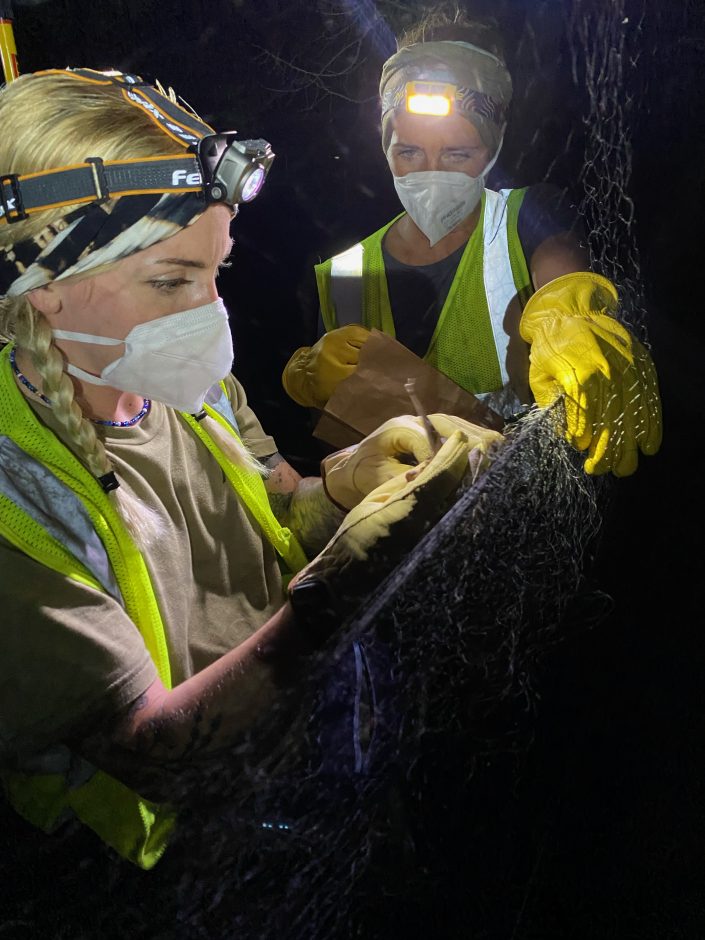Pine Barrens Bat Surveys Provide Insight into Bat Fidelity
by Meaghan Lyon

CWF’s team of biologists, along with several USFWS biologists from the New Jersey Field Office, specializing in bat surveying have been at it again for their fourth year of mist netting in the Pine Barrens. Mist netting surveys for bats starts at sundown and continues for five hours through to the early morning. The nets are set up across travel corridors through the woods with canopy cover and wetland foraging grounds nearby. As the bats head to and from their roosts and foraging grounds, they funnel through the corridors and into our nets. The bats are quickly and carefully extracted from the nets and then walked a short distance to our ‘camp’ where they are processed. Processing bats includes identifying bat species, sex, and reproductive status, as well as taking wing measurements.
Our latest survey was at a productive site that has been surveyed in 2018, 2019, and 2021. Five Eastern red bats and eight Big brown bats were captured during the survey. More than half of our captured Big brown bats were identified as recaptures from previous years! Recaptures are exciting to find because it shows that bats are using the same area each year to forage and roost. The majority of the recaptures were females and identified to be post lactating. This is also exciting because it confirms that they recently gave birth and there is most likely a maternity roost nearby.
Five more bat surveys remain for the 2022 field season so stay tuned to see if we capture our target species, the Northern long-eared bat!




Discover more from Conserve Wildlife Foundation of NJ
Subscribe to get the latest posts sent to your email.
Leave a Comment
Way to go team!! Great news on these fellows. IWe have been supporters of NJ Bats for years on our property and have noticed an increase in activity in the past two years, although not like it was 10 or so years ago. These little fellows appear each night and are doing their part to minimise the nocternal insects.
Keep up the great work!
Thank you for the work you do. It is privilege to protect and educate people on the benefits of integrated pest management by using nature instead of chemicals.
Comments are closed.